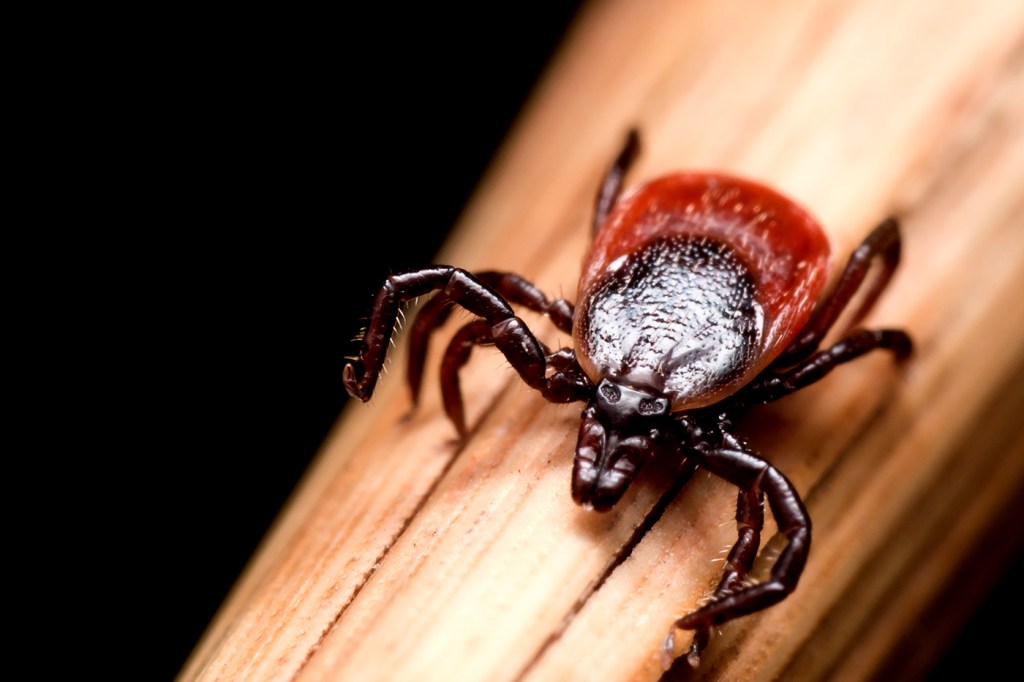Do milder winters mean Lyme disease season lasts all year?

The lack of snow cover and mild winter weather that has people trading in snowshoes and skis for hiking boots, and shovels for gardening rakes, is also increasing their exposure to Lyme disease year-round, scientists say.
“We have had weather conditions very conducive for exposure risk,” says Larry Dapsis, an entomologist in Massachusetts who has produced a series of videos on ticks and tick-borne disease prevention.
The deer ticks that cause Lyme and other diseases are active when temperatures hit 40 degrees, or maybe even a bit lower, Dapsis says.
Warmer winters, more tick activity
And when they emerge from the leaf litter, “they are going to be very hungry” and looking for a blood meal, says Constantin Takacs, an assistant professor of biology at Northeastern University who studies the borrelia burgdorferi bacterium that causes Lyme disease.

Climate change means fewer freezing temperatures across the U.S. In fact, winter was the fastest warming season for 74 of 246 locations analyzed by Climate Central for a Jan. 25 report.
And what of the recent cold snap that sent temperatures plummeting well below freezing in parts of the Northeast where Lyme disease is endemic?
As life-threatening as the weather was in terms of human exposure, it likely did not deliver much of a death blow to the deer tick population, Takacs and Dapsis say.
“They go into the ‘blanket’ of leaf litter,” Takacs says, adding, “The ones that dig very, very deep in those leaf mounds are going to survive, no matter how cold the temperature is.”
“The ones that stay close to the surface will be killed by long periods of subfreezing temperatures,” he says. But “the fewer the number of very cold days there are, the more likely larger numbers of ticks will survive the winter.”
Ticks make their own antifreeze
Deer ticks also have a secret weapon—a naturally occurring type of antifreeze, Dapsis says.
“They make a chemical called glycerol. That reduces the freezing point temperature of their cells,” says Dapsis, who coordinates the tick project for the Cape Cod Cooperative Extension.
That means that even the sub-freezing temperatures experienced in the Northeast Friday and Saturday didn’t kill ticks hidden in the ground and forest floor, Dapsis says.
“They burrow down. They’re happy. When it’s warm enough they’ll come up looking for dinner,” he says.
Ticks don’t burrow up through snow, but this year has seen precious little snow cover in southern New England and other parts of the country.
Dapsis says he tells people to take protective measures against tick exposure whenever it’s above freezing and the ground is bare.
Winter ticks carry lots of Lyme
The deer ticks that emerge in winter are in the adult stage and looking to make a blood meal out of large mammals, including deer, coyotes, dogs—and humans.
“The adult stage ticks prefer a larger host,” Dapsis says.
He says adult ticks also are more likely to carry the pathogen responsible for Lyme disease than the nymphal ticks that emerge in mid-May, and they have an infection rate of 50% versus 20% to 25%.
The nymphal stage ticks are responsible for 85% of Lyme disease cases, mainly because their size—that of a poppy seed—makes them so hard to see, Dapsis says.
But he says adult ticks aren’t that much larger, approximately the size of a sesame seed, so it’s important to take precautionary measures such as wearing shoes and pants treated with the insecticide permethrin and doing tick checks after spending time outdoors.
Protect yourself and pets
“I tell people to tick check year-round, especially in a milder climate like southeastern Massachusetts,” says Dapsis.
In a series of 10 tick disease prevention videos available on Youtube and through Barnstable County, Dapsis demonstrates how to treat clothing with permethrin and discusses the importance of wearing repellent on bare skin and protecting pets.
Hikers may balk at the optics of one common piece of tick prevention, which is to pull socks—preferably light colored for better tick detection—up over their pants.
But creating a barrier between oneself and the creepy, crawly eight-legged ticks that more closely resemble spiders than six-legged insects is a good idea, Takacs says.
“We should keep going in nature and be outdoors,” he says. “When we come back, we do a tick check. We take a hot shower. People need to be aware of the dangers that come with (ticks’) presence and how to be safe around them.”
Cynthia McCormick Hibbert is a Northeastern Global News reporter. Email her at c.hibbert@northeastern.edu or contact her on Twitter @HibbertCynthia






